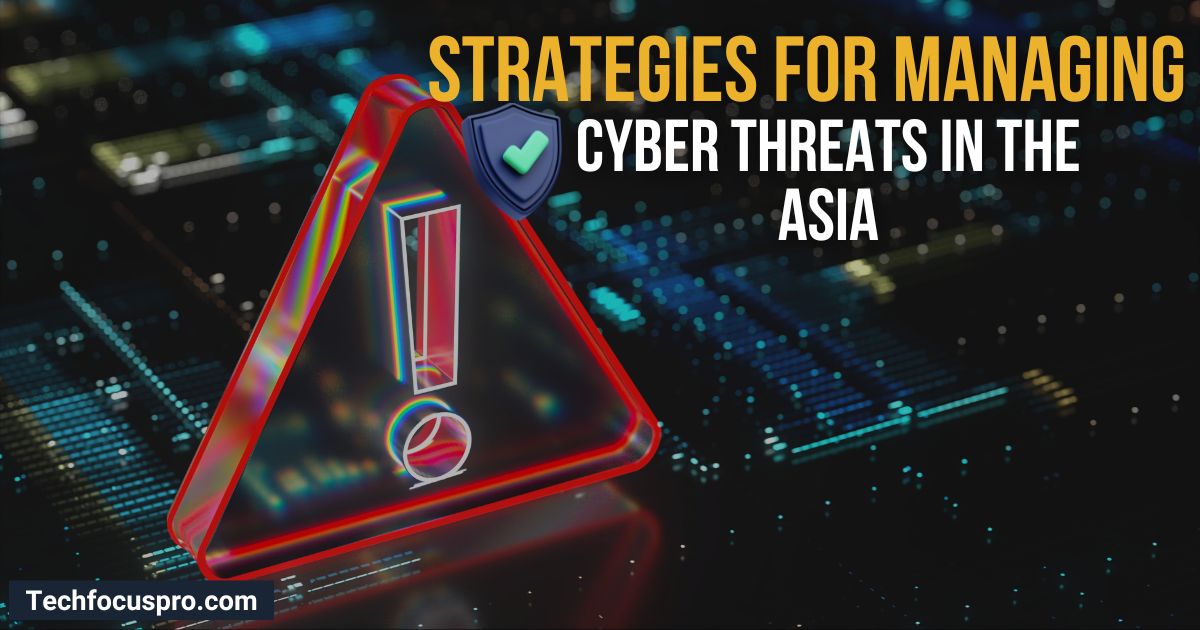Strategies for Managing Cyber Threats in the Asian Landscape

Cybersecurity professionals have recognized Asia as a center for cyber threat operations for a long time. This is partly caused by the quick embrace of technology and the substantial economic advancement in these areas.
Therefore, cybercriminals see these booming economies as profitable objectives. It is now more important than ever to thoroughly comprehend present threats and take proactive steps to safeguard valuable data and digital infrastructure.
Cyber attacks are a serious risk to businesses and governments in the modern digital landscape, especially in China and India. The strategic and physical significance of these areas makes them attractive targets for cybercrime. Understanding how organizations like Fortinet and IBM in China manage these threats is crucial.
Key Takeaways
- Understanding the Cyber Threats in the Asia (India and China).
- Practical strategies for mitigating cyber threats.
- The role of international collaborations in cybersecurity.
- Technological advancements in threat detection and management.
Understanding the Threat Landscape in India and China

China and India have large and dynamic digital ecosystems, which leaves them open to a wide range of cyberattacks. The digital footprints of both countries which comprise digital banking, smart city initiatives, and the e-commerce sectors are growing quickly. As a result, hackers and other cybercriminal groups now find them to be tempting targets.
Regional approaches to security threats are not new. Since the founding of the ASEAN Regional Forum in 1994, East Asian states and their extra-regional dialogue partners have discussed ways to alleviate regional insecurities.
One report claims that China has made large investments to position itself as a global cybersecurity leader, reducing risks in the process. The country still has to contend with both internal and external cyberthreats, though. Cybercriminals often target India because of its expanding IT industry and large number of internet users. Their goal is to exploit vulnerabilities.
The threat environment becomes more complex due to mobile devices and Internet of Things gadgets, which increases the number of possible attack targets. In both nations, ransomware, DDoS assaults, and phishing are common and affect both private citizens and major corporations. The first step in developing effective defensive strategies is understanding these intricate threats.
Effective Strategies for Mitigating Cyber Threats
To effectively address cyber threats, organizations need to take a diversified approach. This entails conducting routine cybersecurity audits, providing improved security processes, and training staff members. Investing in strong firewall systems and encrypting sensitive data can also provide crucial layers of security.
- Regular Cybersecurity Audits: Cybersecurity assessments are crucial for pinpointing weaknesses in a company’s online framework. These assessments must be carried out by skilled experts capable of delivering in-depth reports and practical suggestions. Frequent audits make sure that security measures align with current cybersecurity standards. Furthermore, audits can uncover possible vulnerabilities that may have been missed, thus stopping future breaches.
- Employee Training: Security breaches are frequently caused by mistakes made by humans. Training sessions can teach employees optimal techniques, such as identifying phishing scams and creating robust, distinct passwords. Organizations must introduce continuous educational initiatives focusing on the most recent security risks and precautionary steps. Employee knowledge is essential in protecting against cyber attacks, as even top-notch technical defenses can be compromised by human errors.
- Advanced Security Protocols: Advanced security protocols, including two-factor authentication and biometric verification, can significantly enhance an organization’s security framework. Investing in cutting-edge technologies can provide additional defense to thwart potential attacks. For instance, end-to-end encryption ensures data privacy, while modern intrusion detection systems can identify and respond to malicious activities in real time.
The Role of International Collaborations

To combat cyber dangers, international collaboration is essential. Working together, public and commercial sectors may exchange intelligence and best practices that are vital for anticipating and resolving cybersecurity crises. International cooperation is essential for complete security measures because global enterprises frequently operate in numerous nations.
A comprehensive cybersecurity policy necessitates the sharing of surveillance data and threat intelligence among states. This collaboration can assist in promptly detecting and eliminating cyberthreats before they become more serious.
- Public-Private Partnerships: By collaborating, public institutions and private companies can make a notable difference in enhancing cybersecurity. These partnerships enable a more structured and efficient approach to addressing cyber threats. Governments regulate and provide resources, while private companies contribute their tech expertise and innovative ideas.
- International Regulations: Harmonizing international regulations can streamline efforts to combat cyber threats. Regulatory frameworks play a critical role in setting standards and ensuring compliance, making it easier to manage cross-border cyber threats. Organizations operating internationally must stay updated with various regulatory requirements, ensuring their cybersecurity practices comply with global standards.
Technological Advancements in Threat Detection

Technology development has brought about more sophisticated tools for identifying and handling threats. AI and ML are currently being utilized to forecast and prevent cyber threats before they occur.
Moreover, blockchain technology provides novel approaches to safeguarding transactions and guaranteeing data integrity. These technological advancements have greatly improved the abilities of cybersecurity experts in detecting and minimizing threats.
- Artificial Intelligence (AI) and Machine Learning (ML): AI and ML have significantly transformed cybersecurity. These technologies can instantly examine large quantities of data, pinpointing trends and irregularities that may signal possible security risks. Their ability to predict makes them extremely valuable for preventing threats. AI-driven technology can identify abnormal activity within a network and initiate automated actions to combat security risks promptly.
- Blockchain Technology: Blockchain technology, renowned for its decentralized characteristics, provides creative ways to safeguard data. Its unchangeability makes it an excellent choice for guaranteeing transaction integrity and protecting sensitive data from manipulation and deception. Establishing an immutable record of transactions can aid in preventing data breaches and confirming the credibility of digital interactions.
Key Strategies for Managing Cyber Threats
- Strengthen Regulations: Align cybersecurity standards across countries and enforce compliance.
- Raise Awareness: Educate employees and the public about cyber threats.
- Invest in Technology: Use advanced tools like AI, blockchain, and endpoint security.
- Build Resilience: Create incident response plans, conduct regular security audits, and have disaster recovery plans.
- Collaborate: Share information regionally and globally, and partner with the private sector for better threat intelligence.
Conclusion
The Asian landscape, particularly India and China, remains a focal point for cyber threats. Organizations can significantly enhance their cybersecurity posture by understanding the specific challenges and implementing robust strategies. International collaborations and technological advancements are pivotal in this ongoing battle to secure digital assets and information.
As cyber threats evolve, strategies to combat them must also evolve. Utilizing modern technology, ongoing education, and proactive actions are critical components of a thorough cybersecurity plan. By promoting partnerships on a global scale and actively adopting the latest technological developments, stakeholders in Asia can establish a safer digital atmosphere for their customers and users.
FAQs
What are the solutions for cybersecurity threats?
- Follow Best Practices: Keep systems updated and use strong passwords.
- Invest in Security Tools: Use advanced software and technology.
- Educate and Train: Teach people about safe online behavior.
- Plan and Prepare: Have a response plan and conduct regular security checks.
- Work Together: Share threat information and collaborate with others.
What are cybersecurity threats in Asia?
- Malware and Ransomware: Harmful software that can steal or lock your data.
- Phishing Scams: Fake emails or messages trying to trick you into sharing personal info.
- Advanced Persistent Threats (APTs): Long-term attacks designed to steal valuable information.
- DDoS Attacks: Flooding websites with traffic to cause outages.
Which country has the best cybersecurity in Asia?
- Singapore stands out as a leader in cybersecurity in Asia, thanks to its strong regulations and advanced security measures.
How to reduce cybersecurity risks?
- Keep Everything Updated: Regularly update your software and systems.
- Use Strong Passwords: Create and use complex, unique passwords.
- Stay Informed: Learn about cyber threats and how to stay safe.
- Implement Security Measures: Use firewalls, antivirus programs, and encryption.






